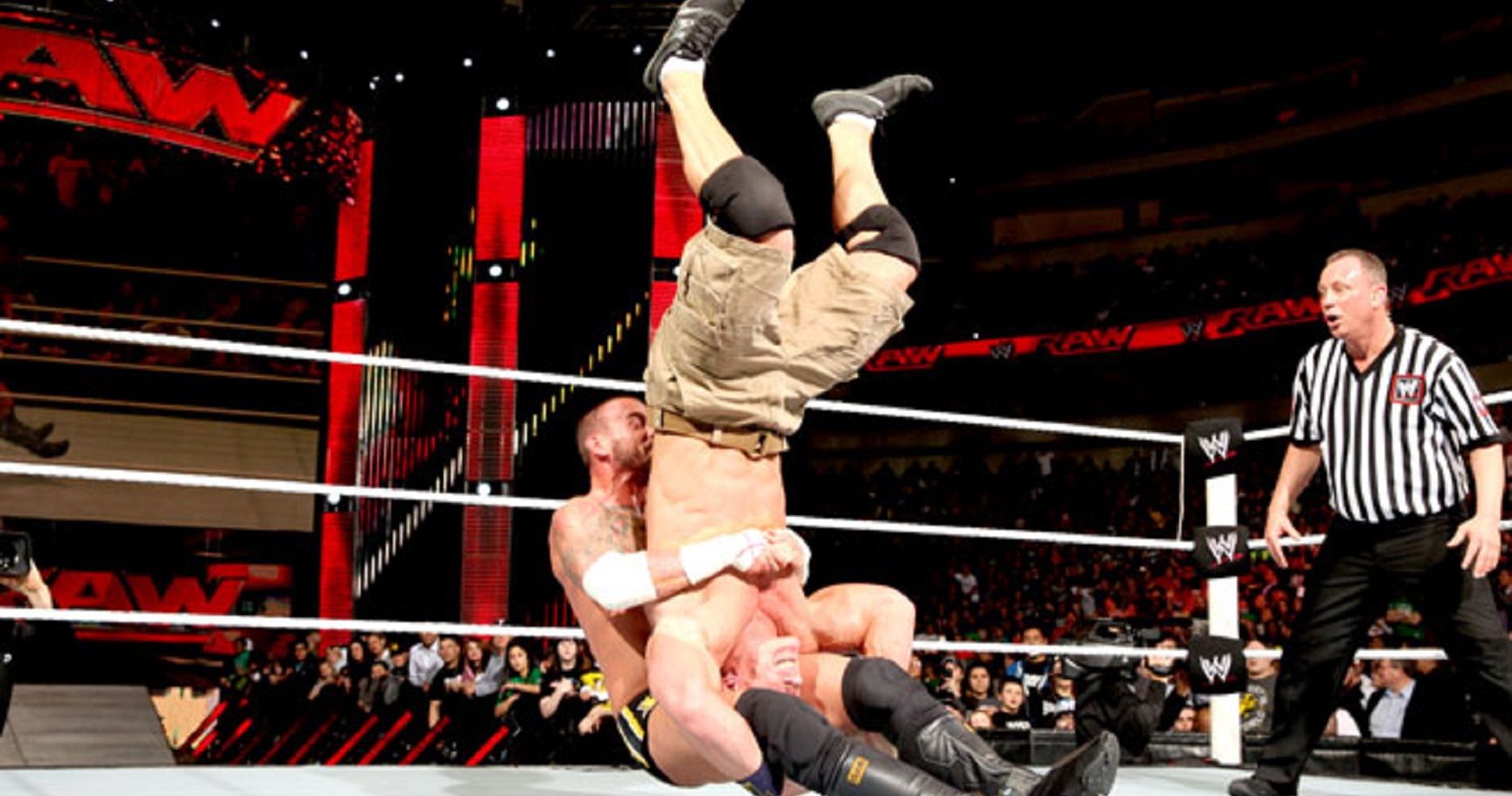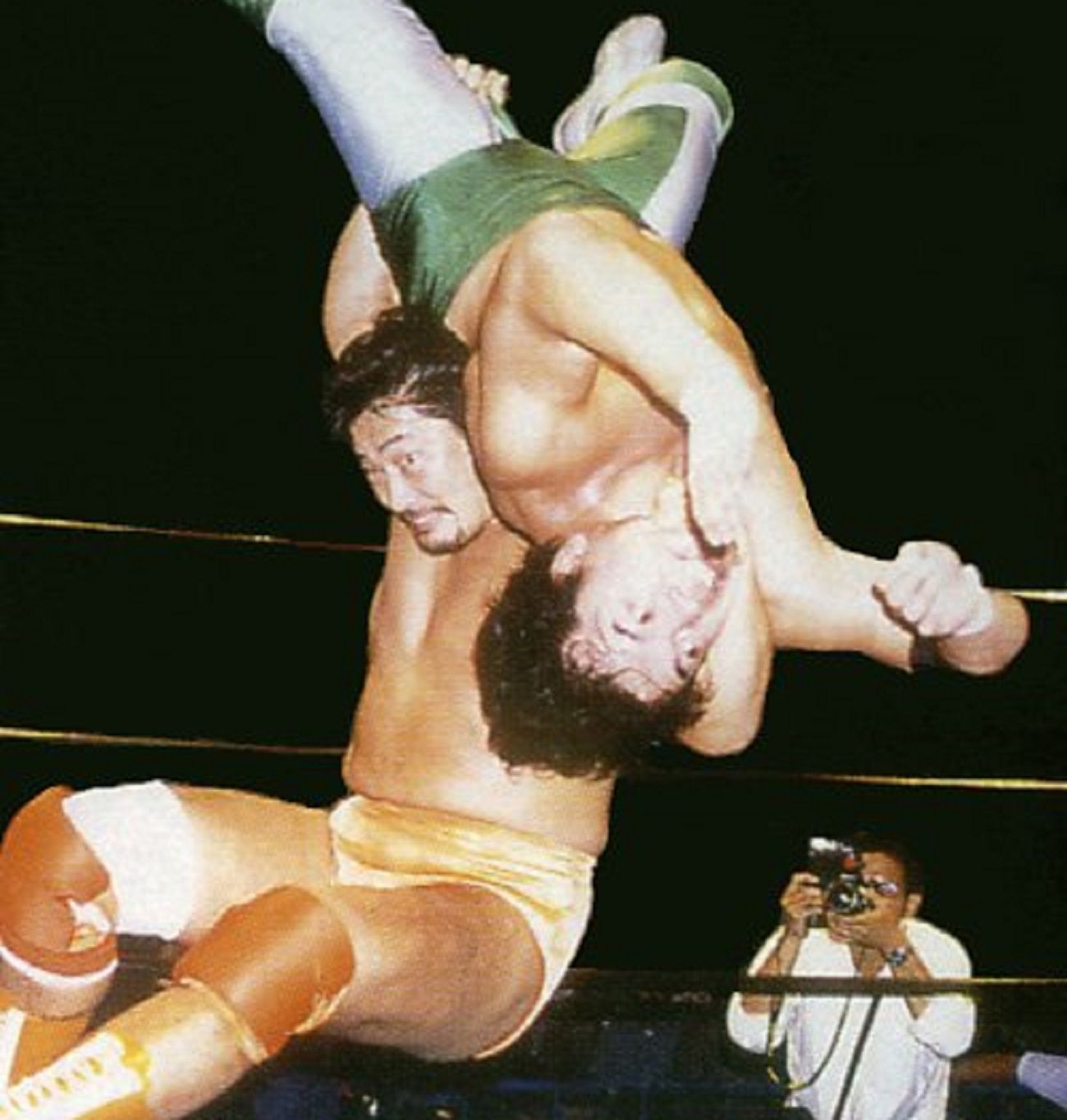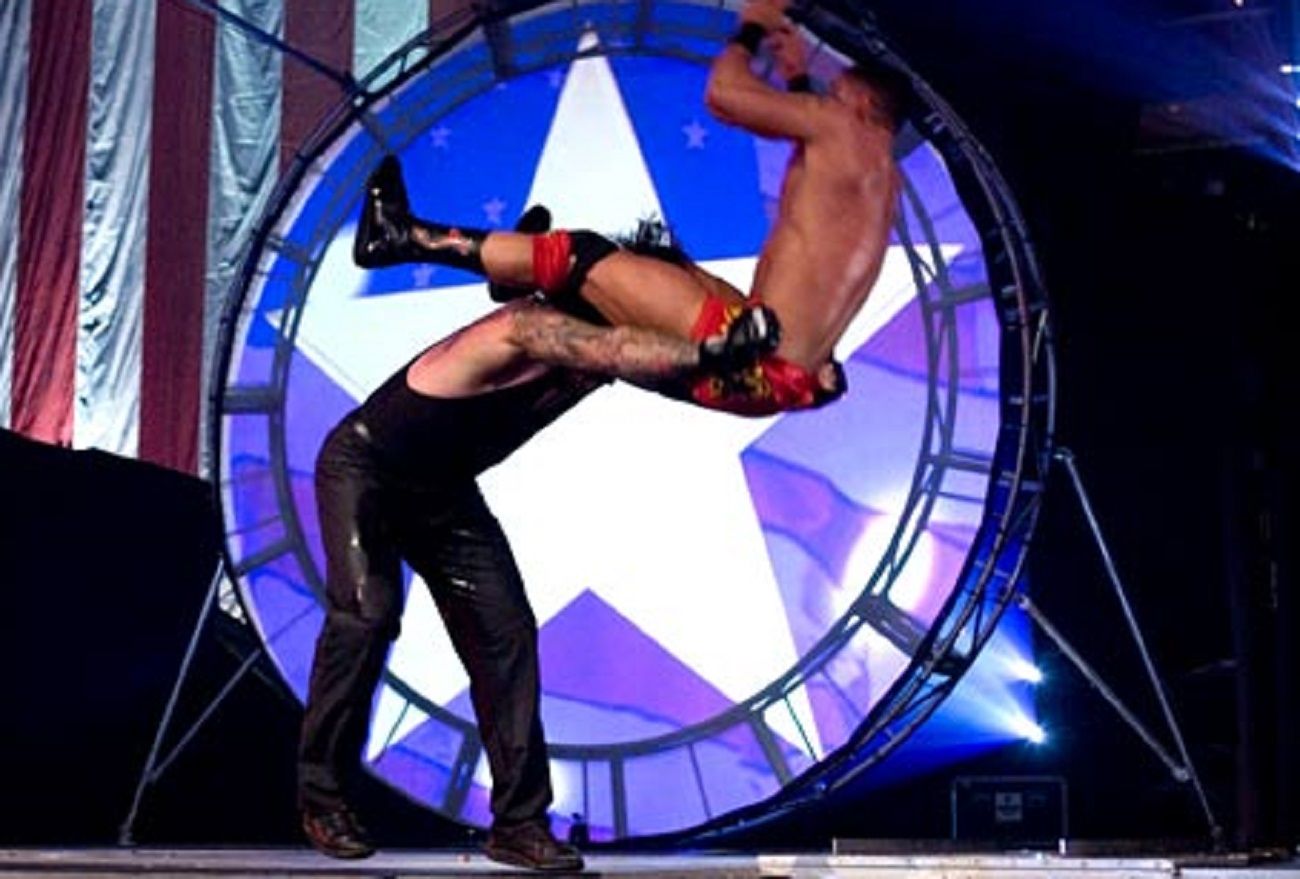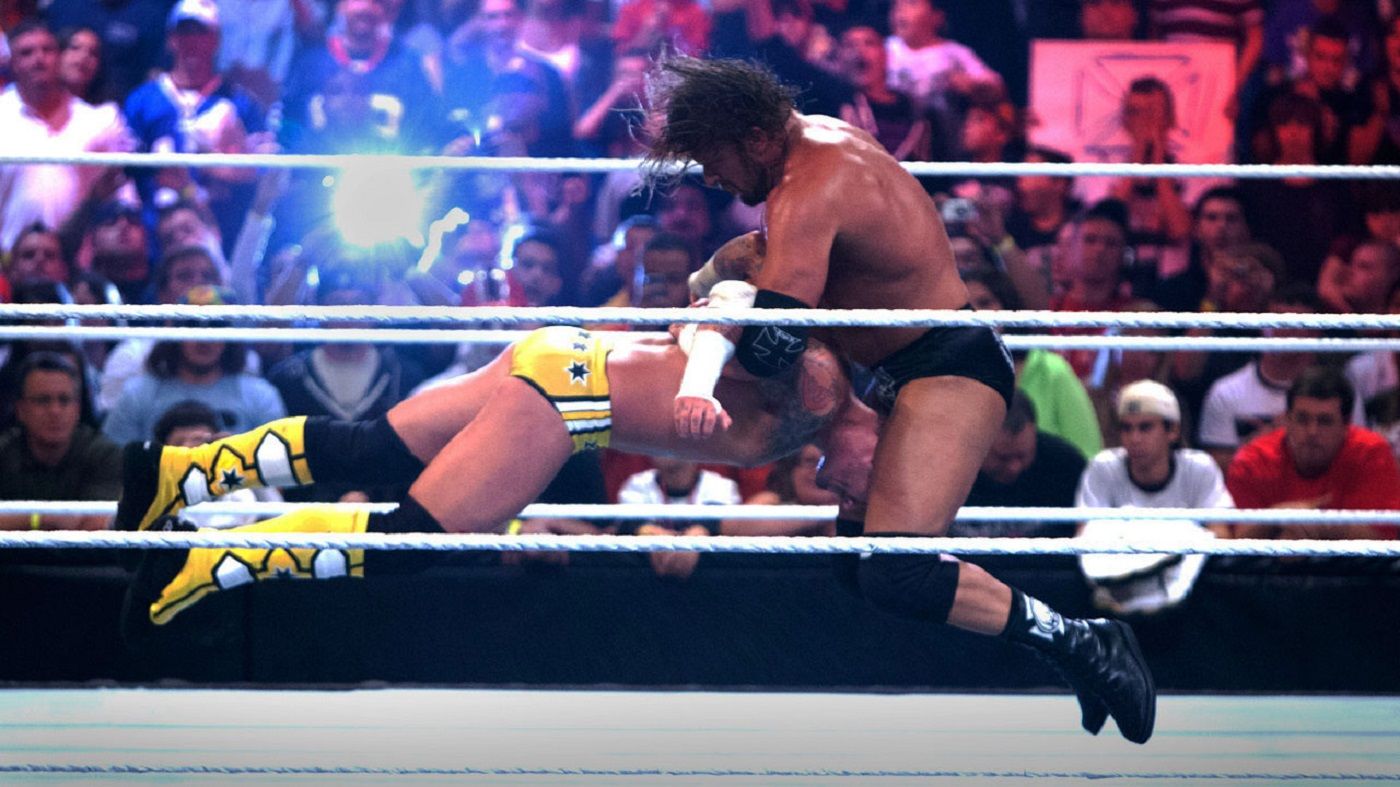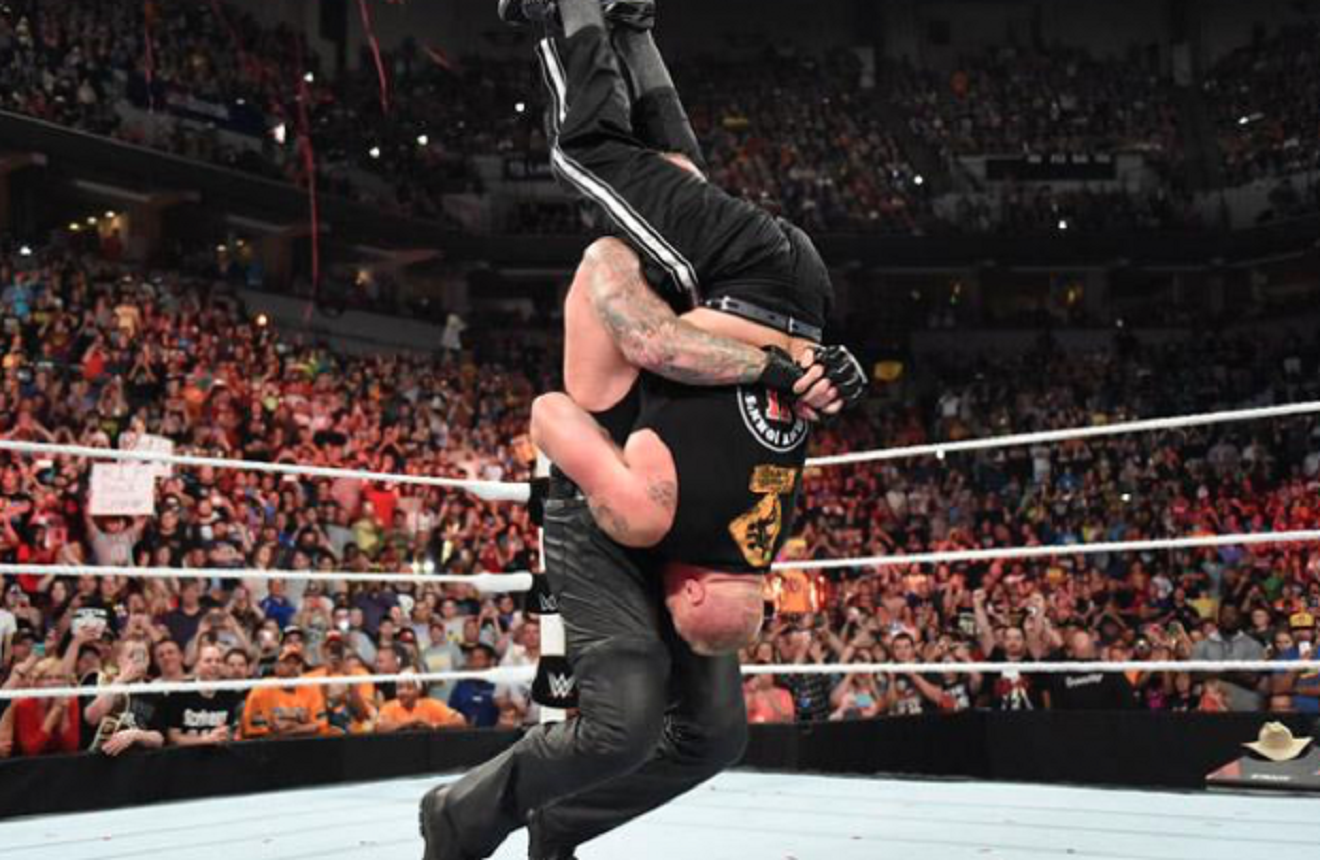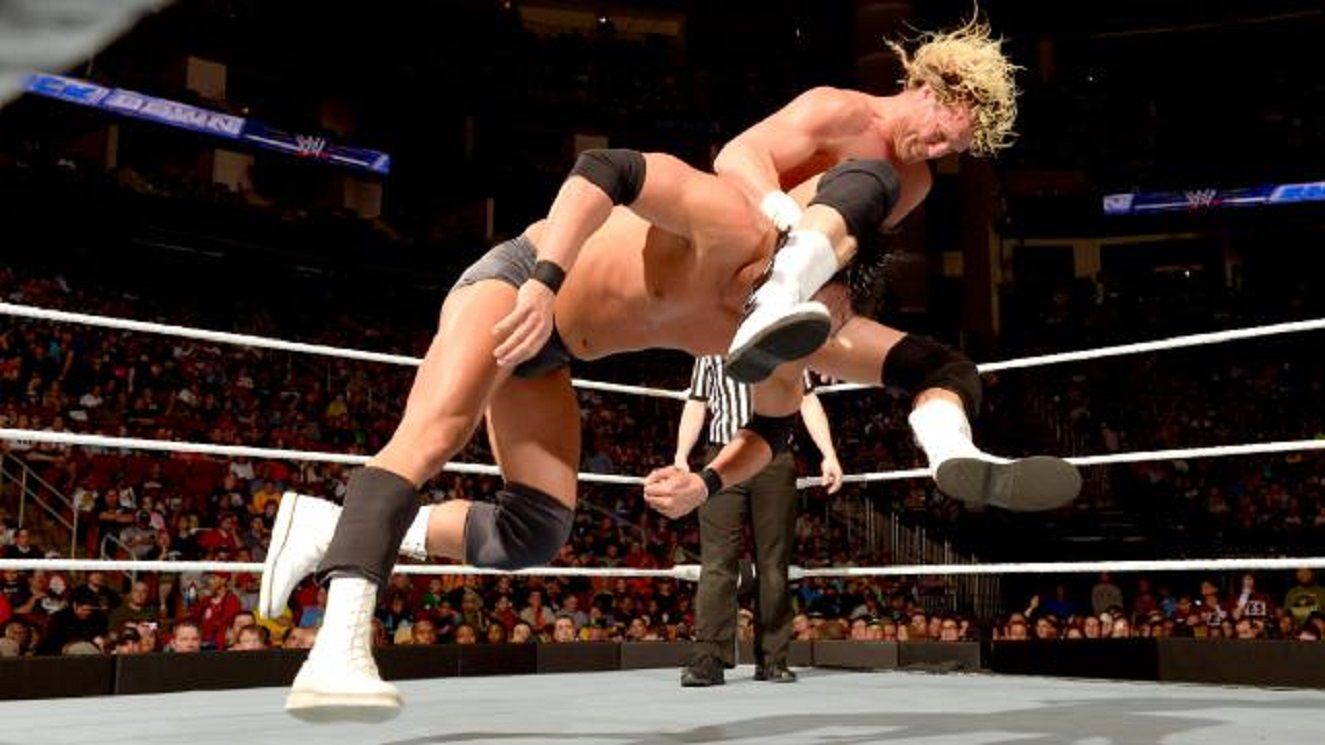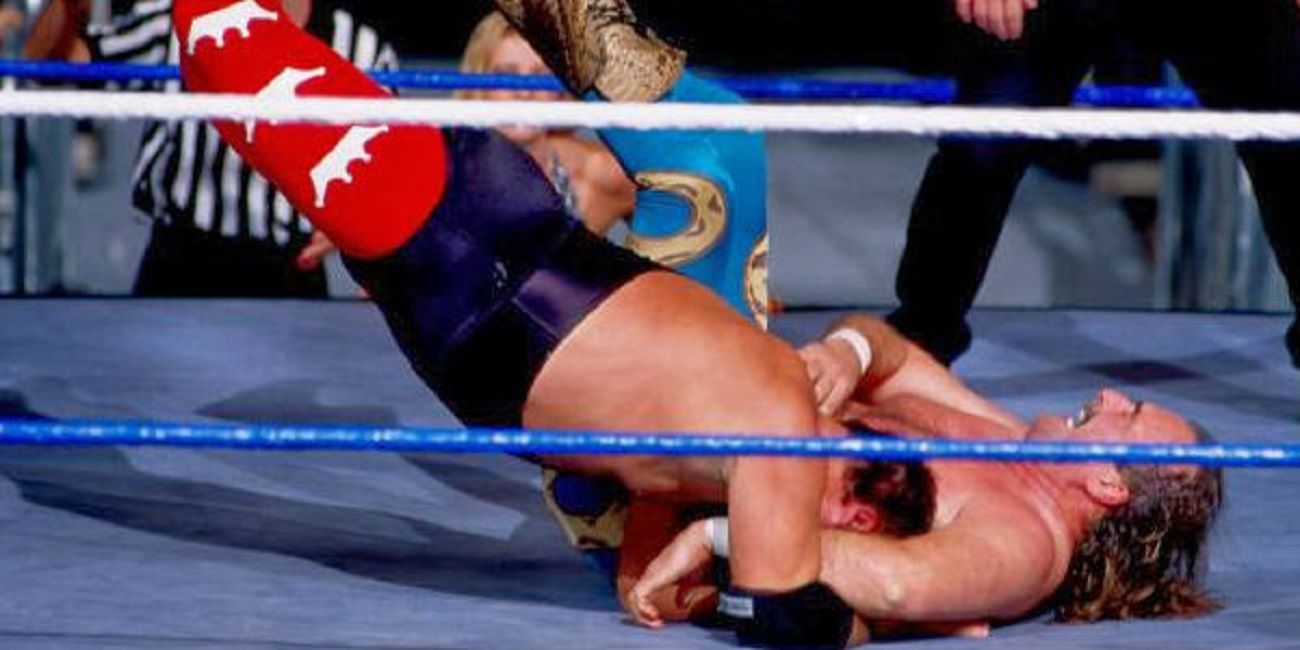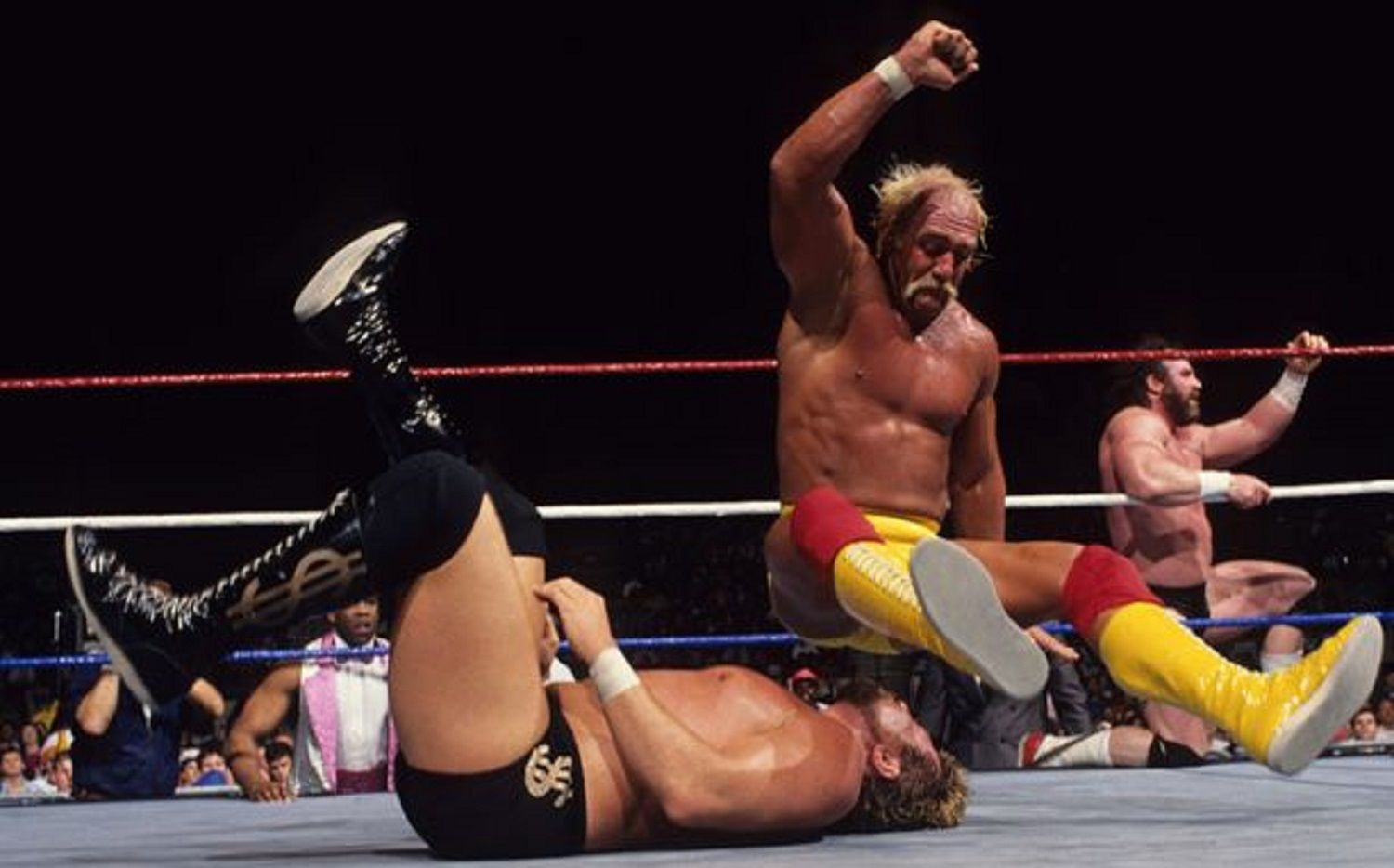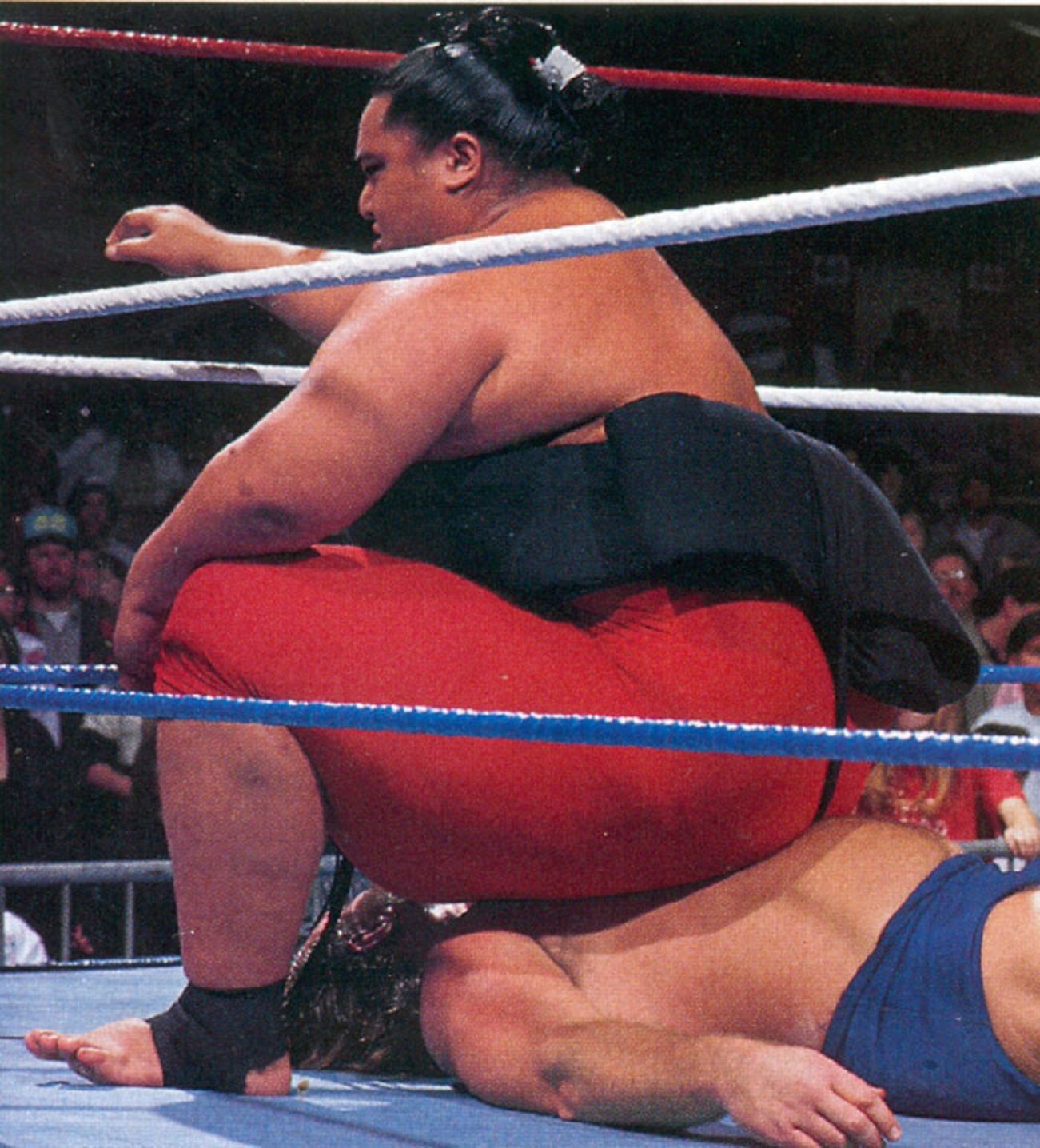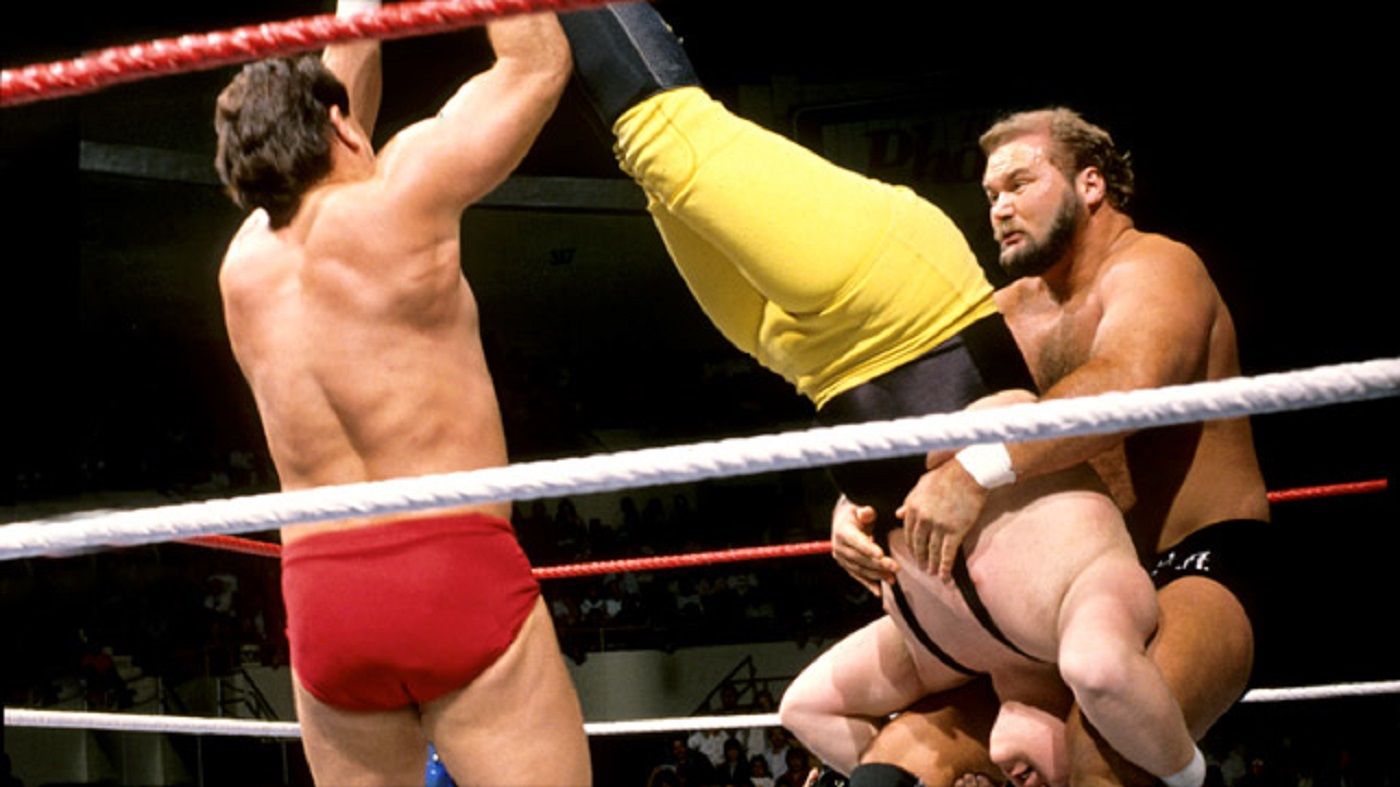Every wrestling fan has their eureka moment some day where they think to themselves "Hang on a minute, I reckon this might not be real". Perhaps you realized a few of those right hands weren't quite connecting. Or that the ring must be somehow padded and able to absorb those high impact moves. Or, you might see a move like a piledriver and then minutes later see the victim walk out of the arena. In non wrestling talk, that's a fully grown man being dropped on his head and suffering barely a scratch.
The execution of these high impact moves is what professional wrestling is all about. Yet so ravenous is the fans' appetite for innovation, moves like the piledriver or the leg drop, once devastating finishers, are barely considered special these days. To wow the audience now often means to launch yourself from the top of a ladder through a series of strategically banked tables. Or to fall from the top of a cage, be grated across some barbed wire or slammed onto a pile of thumb tacks.
That being said, the purist still enjoys and appreciates the perfect execution of a dangerous maneuver. It takes great skill and precision on the part of attacker and opponent to get something like this right. Mistakes can be very costly, even fatal. Droz found this out the hard way in 1999 when D'Lo Brown botched a running powerbomb, leaving Droz in the permanent throes of quadriplegia. Several moves on this list are so dangerous they've been banned from the WWE.
Every wrestling fan at some time has been watching a match and thought "If this was real, he'd be dead right now". Here's a collection of 10 wrestling moves, past and present, that have the potential to kill a man in real life.
10 10. Burning Hammer
What happens in the ring: A very rare move, and chances are you haven't seen it. Firstly the opponent is picked up onto the shoulders of the attacker, but with the back resting across the shoulders, the opposite to a fireman's carry. Then the attacker takes down his opponent head first with the top of the spine absorbing most the impact. Kenta Kobashi made this move famous but only performed it on a select few wrestlers.
What would happen in real life: The sheer force of this move is crushing. The victim is being forced head first into the ground from roughly six feet. The most likely result would be several broken bones in the neck followed by a fight to stay alive, if you weren't killed on impact.
9 9. The Last Ride
What happens in the ring: At least one good thing came out of The Undertaker's biker faze. He took the powerbomb and made it even cooler. The Last Ride was a devastating finisher delivered from an incredible height. The victim would be flipped around in typical powerbomb style, then The Undertaker would lift them higher with his outstretched arms before slamming them into the mat.
What would happen in real life: Just imagine delivering one of these to someone on a surface harder than a wrestling ring. The Undertaker stands almost seven feet tall, so for starters the victim is falling from well over eight feet up in the air at a speed far greater than gravity. This would most likely cause a severe head injury on impact with the back of the skull likely taking most of the initial force. From that height, you're looking at a skull fracture, massive brain damage and hemorrhaging. That's if you're not killed on impact.
8 8. Pedigree
What happens in the ring: Formerly known as the double underhook face buster until Triple H came along and made it his own. The opponent is bent forward and their head nestled between the attacker's legs while still standing. Both arms are hooked before the attacker jumps up and drops to his knees. The victim lands face first in the mat. The key to keeping this move safe is to release the opponent's arms before they hit the mat so they brace themselves for the fall. There is a variation on this, where Triple H keeps firm hold of the arms and lifts up at the point of impact so there is no facial contact with the ground. Quite often in this instance, the victim lands on their knees for added safety.
What would happen in real life: If the move was executed properly, with the arms hooked right until the moment of impact, the opponent would slam face first into the ground. If this was executed on a concrete surface or the unforgiving floor of a bar, possible consequences range from spinal damage, broken facial bones, blindness, severe brain damage and death.
7 7. Dragon Screw Neck Whip
What happens in the ring: Innovative but very dangerous. Keiji Mutoh made this move famous and executes it when the opponent is standing on the apron, facing the ropes. He picks up the opponent as if starting a suplex, but instead of getting them vertical they're kept horizontal, using the ropes as a support with about half the victim's body hovering over the ring. The attacker then grips the victim in a headlock, and whips him around 180 degrees as he takes him to the mat with the neck taking the brunt of the impact. Don't expect this to make an appearance in the WWE any time soon. There's very little margin for error in the ring when it comes to a the Dragon Screw Neck Whip.
What would happen in real life: If this was real and proper precaution wasn't being taken, the victim could suffer anything from whiplash to a badly broken neck. A broken neck can mean a severed spinal cord, and that often means goodnight once and for all.
6 6. Tombstone
What happens in the ring: The opponent is picked up for a scoop slam but instead of being tossed back to the mat, they're inverted so their head is between the perpetrator's leg and their body is completely vertical. The attacker then falls to his knees, seemingly dropping the opponent on their head. Obviously performer always makes sure their opponent's head is nestled high enough above the knees so that there is never any impact with the mat.
What would happen in real life: Most likely this would cause a broken neck. One and possibly several of the cervical vertebrae at the top of the spine would fracture. Given the power and directness of a Tombstone, this would cause irreparable damage to the spinal cord. At best you escape with lifelong paralysis, but you might also suffer from asphyxiation or a severed spinal cord leading to death.
5 5. Fame Asser
What happens in the ring: Usually executed at ground level, but sometimes Billy Gunn (and others) have pulled this off from the top rope. With the opponent standing but hunched over, Billy Gunn would run up side on, jump and hook his inside leg over the opponent's neck and take the victim to the ground without using his hands. It looks cool, but it's easy enough to execute safely so long as the attacker keeps his knee bent at the moment of impact.
What would happen in real life: This would produce similar injuries to the pedigree with the potential to be even worse. The face hits the ground with more force given it's being helped down both by gravity and the opponent's leg. While most facial trauma injuries are non fatal, it doesn't entirely rule out the possibility of death. A compromised airway is the most likely cause.
4 4. DDT
What happens in the ring: An underrated move in modern wrestling, the DDT is simply a front facelock combined with a takedown. There are many variations, but the most common causes the opponent to take the brunt of the impact on top of their head, causing them to roll forward and land on their back. It can also be performed so the opponent lands face down taking the brunt of the impact with his or her face. The most dangerous variation is the Bloody Sunday DDT which begins as a suplex and ends with the attacker taking down his opponent head first into the mat, like a brainbuster.
What would happen in real life: This move almost combines the dangers of a Tombstone and a Pedigree. Either the face takes the full force at speed leading to severe facial trauma, or the neck breaks as it hits the ground. The Bloody Sunday DDT in particular means taking the full impact to the neck form a height of about six feet. Not too many people would survive that. This would instantly end any street fight.
3 3. Atomic Leg Drop
What happens in the ring: Not an overly exciting move visually, and not even a finisher these days. But Hulk Hogan won many big matches employing this and the crowd loved it. With the opponent lying face up, the attacker usually bounces off the ropes once and runs at the victim side on. The attacker jumps in the air, and comes down with his inside leg across the opponent's throat, landing in a seated position. Real injury in the ring is avoided by keeping the attacking leg bent so the crook of the knee makes minimal contact with the victim's throat. The attacker ensures to land on their rear end to cushion the blow. Ironically, performing this move so much caused back problems for Hogan.
What would happen in real life: If this was delivered properly from the height Hogan used to get, with no intention of keeping the victim safe, it would most likely cause severe damage to the windpipe, compromising the victim's ability to breathe. Without immediate treatment, the victim of such an injury can die of asphyxiation.
2 2. Banzai Drop
What happens in the ring: One of the most devastating finishers we've seen in the ring. Yokozuna would drag his hapless opponent into the corner so he was lying diagonally with his head nearest the turnbuckle, and his legs pointed at the opposite corner. Yokozuna would climb to the second rope, bounce a few times and then jump down landing on his opponent's chest while still facing the corner. Two levels of safety were built into the move. Firstly he would land feet first taking most of the weight, and he would also hold onto the ropes as an extra layer of protection.
What would happen in real life: If he wanted to, Yokozuna could've killed opponents with this move. He teetered at about 600 pounds for most of his career. Combine this with gravity, dropping from about one meter, and the hapless victim would be crushed. If the trauma of the impact didn't kill you, anything from a destroyed windpipe to a broken chest cavity and internal injuries, then Yokozuna's heavy presence on your prone body soon would drain all of your oxygen with suffocation not far behind. Taking one from Rikishi wouldn't be much better.
1 1. Piledriver
What happens in the ring: This move has developed over the years and there's endless variations, although it was banned by WWE in 2000 unless a wrestler obtained special permission to use it. In its simplest and best form, the set up begins like a powerbomb with the opponent's head between the attacker's leg. Instead of rotating the opponent all the way around, they're lifted up to the inverted position before the attacker sits down, driving the victim head first into the mat. The victim and the opponent both face the same direction, as opposed to the Tombstone. The key to pulling this off is clearly to make sure the opponent is held high enough off the ground to allow for a gap between the head and mat on impact.
What would happen in real life: As with the Tombstone, a Piledriver delivered properly and at full force would cause a broken neck and could easily lead to death. In 1997, Owen Hart performed a misguided piledriver to Stone Cold, breaking his neck and sidelining the Rattlesnake for several months. Stone Cold later said it was the scariest moment of his life.

